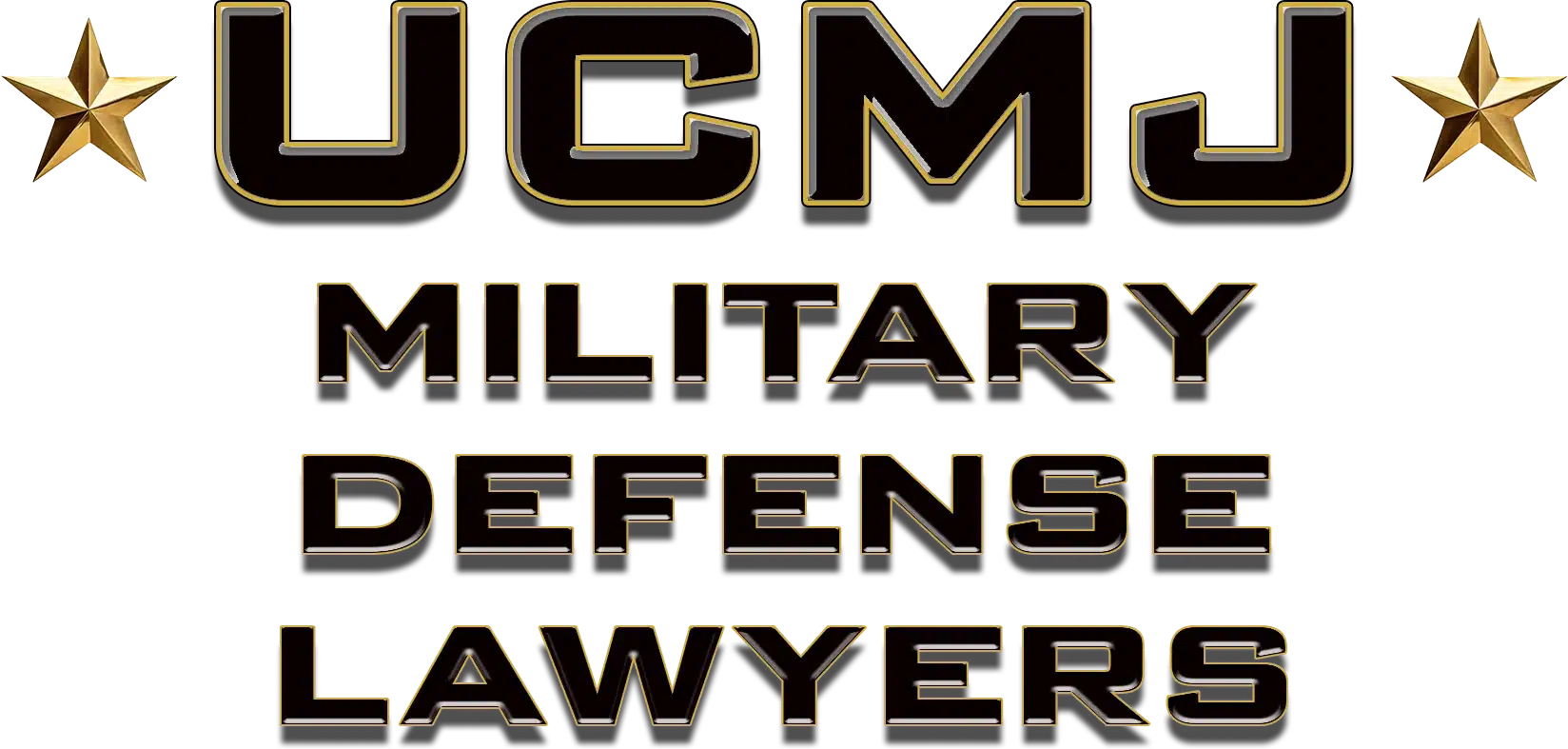Article 92 UCMJ: Failure to Obey an Order or Regulation – Expert Military Defense
Article 92 of the Uniform Code of Military Justice (UCMJ)—Failure to Obey an Order or Regulation—is arguably the most frequently charged offense in the military justice system. It is the cornerstone of military discipline, but it is also one of the most misused articles for pursuing administrative and criminal action against service members. At Gonzalez & Waddington, we understand that a charge under Article 92 is never just a simple infraction; it is a direct attack on your reputation, security clearance, and ability to remain in the armed forces.
The UCMJ is clear: service members must obey lawful orders. However, the application of Article 92 is fraught with legal complexity, often involving vague regulations, confusing chain of command directives, or allegations of dereliction of duty stemming from non-punitive guidance. A conviction under the most serious subsection can lead to a Dishonorable Discharge, two years of confinement, and total forfeiture of pay. This is why securing military defense lawyers with a comprehensive, global understanding of the UCMJ and a history of challenging command overreach is absolutely essential. Our court-martial attorneys are dedicated to defending your career against these potentially devastating allegations.
The Three Forms of Article 92 and Their Severity
Article 92 encompasses three distinct offenses, each with different elements the government must prove, and varying levels of maximum punishment. An effective defense strategy requires pinpointing the specific charge and attacking its elements.
1. Violation of a Lawful General Order or Regulation (Article 92(1))
This applies to orders issued by high-level commanders (e.g., General or Flag Officers) that are generally applicable throughout a command or service (e.g., a Post Regulation prohibiting certain off-base conduct).
- Key Element: The prosecution is not required to prove that the accused had actual knowledge of the order. Service members are presumed to know all lawful general orders.
- Maximum Penalties: Dishonorable Discharge, forfeiture of all pay and allowances, and two years of confinement.
2. Failure to Obey Other Lawful Orders (Article 92(2))
This covers specific, direct orders (verbal or written) not considered “general,” such as an order from a supervisor to complete a specific task or report to a specific location.
- Key Element: The prosecution must prove the accused had actual knowledge of the order. This is a primary battleground for the defense.
- Maximum Penalties: Bad-Conduct Discharge, forfeiture of all pay and allowances, and six months of confinement.
3. Dereliction in the Performance of Duties (Article 92(3))
This applies when a service member willfully or negligently fails to perform a duty or performs it in a culpably inefficient manner. The duty may be imposed by law, regulation, order, or custom of the service.
- Key Element: The accused must have known, or reasonably should have known, of the duty. The prosecution must prove the failure was willful, negligent, or culpably inefficient.
- Maximum Penalties (Willful): Bad-Conduct Discharge, forfeiture of all pay, and six months of confinement.
Battle-Tested Defenses and Legal Strategy
Defending an Article 92 charge requires a meticulous, multi-pronged approach that challenges both the facts and the law. Our firm, Gonzalez & Waddington, uses decades of experience defending service members worldwide to expose weaknesses in the government’s case before they reach a general court-martial or Administrative Separation Board.
Our defense strategy focuses on the following key areas:
- Challenging the Lawfulness of the Order: An order must have a valid military purpose, must be issued by a proper authority, and cannot violate the Constitution, U.S. law, or a superior regulation. We aggressively file motions to dismiss specifications based on unlawful, vague, or overbroad orders.
- Lack of Knowledge (Crucial for 92(2) and 92(3)): We challenge the government’s proof of actual knowledge. If the order was poorly disseminated, confusing, or delivered through an unreliable channel, the government cannot meet its burden.
- Mistake of Fact or Impossibility: We investigate and present evidence showing that the service member genuinely misunderstood the order’s requirements, or that compliance was physically or logistically impossible under the circumstances.
- Selective or Arbitrary Enforcement: We look for evidence that other service members violated the same rule but were not charged. This can undercut the government’s claim that the charge is necessary for “good order and discipline.”
- Challenging the Duty (Dereliction Cases): We demand proof that the alleged duty was clearly defined, known, and that the failure was not merely simple incompetence or human error, but rather willful or negligent conduct.
The Gonzalez & Waddington Advantage: Global UCMJ Experts
When your career is jeopardized by an Article 92 charge, you need more than a local military defense attorney. You need a team of highly-specialized UCMJ defense lawyers who possess the expertise and independence to stand up to command pressure anywhere in the world.
Gonzalez & Waddington’s reputation as expert court-martial attorneys is built on:
- Global Reach: We deploy to defend clients facing charges at any military installation, ensuring you have experienced counsel on the ground, regardless of your duty station.
- Independence: Unlike military-appointed counsel, our firm is not tied to the military chain of command. We advocate solely for your interests, without fear of career reprisal.
- Administrative Defense: We treat all non-judicial punishment (Article 15) and administrative separation proceedings, including Boards of Inquiry (BOI), with the seriousness of a court-martial, understanding that these can also lead to a less-than-Honorable discharge.
The time to protect your record is now. A conviction, even through non-judicial punishment, can permanently block promotions, revoke your security clearance, and lead to an involuntary administrative discharge. Do not let an Article 92 charge define your service or your future.
Article 92 UCMJ – Failure to Obey an Order or Regulation – Frequently Asked Questions
What is the legal difference in how the government proves Article 92(1) versus Article 92(2)?
The difference lies entirely in the Knowledge element. For Article 92(1), Violation of a Lawful General Order or Regulation, the government does not have to prove the accused knew of the order because knowledge is presumed. For Article 92(2), Failure to Obey Other Lawful Orders, the government must prove the accused had actual knowledge of that specific order. This distinction is vital for the defense, as a lack of knowledge is a viable defense for 92(2) but not for 92(1).
What makes a military order “unlawful,” and can I refuse to obey it?
An order is unlawful if it is contrary to the Constitution, U.S. law, or military regulation, or if it has no valid military purpose (e.g., ordering a service member to perform personal chores for the supervisor). Orders are presumed lawful, and the burden is on the defense to prove otherwise. Disobeying an order, even one you suspect is unlawful, is extremely risky. Our court-martial attorneys advise obeying first and challenging the order legally afterward, unless the order demands the commission of a crime or war crime, which is an exception.
What are the potential career consequences of an Article 92 conviction, even if no court-martial occurs?
Even if the charge results only in non-judicial punishment (NJP or Article 15), a finding of guilt for an Article 92 violation can be career-ending. The finding can result in a General Officer Memorandum of Reprimand (GOMOR) that can be filed in your permanent record, preventing future promotions, revoking security clearance, and often leading to involuntary discharge via an Administrative Separation Board. An effective defense aims not just to avoid court-martial but to prevent any adverse finding that can lead to a punitive discharge.
How do the military defense lawyers at Gonzalez & Waddington challenge a Dereliction of Duty charge?
For Dereliction of Duty (Article 92(3)), our strategy often challenges the “knowledge” and “culpability” elements. We argue the service member lacked adequate training or equipment to perform the duty, or that the duty itself was never clearly communicated, meaning the failure was not “willful,” “negligent,” or “culpably inefficient.” We investigate unit Standing Operating Procedures (SOPs) and training records to show that the failure was due to systemic issues or a simple, non-culpable mistake, rather than intentional misconduct.
Why is it important to contact a civilian UCMJ attorney immediately for an Article 92 investigation?
Delaying contact is the biggest mistake a service member can make. The investigation determines the direction of the case. Michael & Alexandra Gonzalez-Waddington know that getting ahead of the command narrative is crucial. We intervene early to preserve evidence, prevent you from making damaging statements to investigators (CID/OSI/NCIS), and immediately challenge the lawfulness or clarity of the order or regulation at the heart of the charge. Early intervention significantly increases the chances of having charges dropped or mitigated to non-punitive administrative action.
Facing Article 92 charges while on Temporary Duty (TDY) can be overwhelming and isolating. Service members often find themselves away from their home base, without immediate access to legal guidance or familiar support networks. The Article 92 TDY Roadmap is a strategic resource designed to help military personnel navigate these challenges effectively. Whether you are accused of violating a lawful order or regulation during an assignment abroad or stateside, knowing how to respond is critical. This guide helps you understand your rights, the legal process, and what proactive steps to take. Our goal is to empower you with actionable knowledge so you can make informed decisions during a difficult time. Military justice can be complex, but you do not have to go through it alone.
Understanding Article 92 Charges and TDY Assignments
Article 92 of the Uniform Code of Military Justice (UCMJ) criminalizes failure to obey lawful orders or regulations. When this occurs during a TDY, which stands for Temporary Duty assignment, the situation can become even more complicated. TDY assignments place service members in unfamiliar environments, increasing the likelihood of misunderstandings, lapses in judgment, or miscommunications that can lead to perceived rule violations.
For example, an Airman attending a remote training course may receive verbal instructions that conflict with written policies. If they follow verbal orders and something goes wrong, they could be accused of disobeying a lawful written regulation. In another case, a soldier may accidentally miss a curfew due to ambiguous briefings. Still, this could result in a formal charge under Article 92. Understanding how these charges arise during TDY is key to forming a solid defense.
Why the Article 92 TDY Roadmap Is Crucial to Your Defense
The impact of Article 92 charges during TDY is not just temporary. These allegations can result in serious consequences such as loss of rank, confinement, or even discharge from service. The implications also extend to a person’s career, certifications, and post-military opportunities. Having a structured Article 92 TDY Roadmap helps resolve confusion and ensures timely and decisive action. It also provides clarity in fluid and stressful environments, enabling service members to protect both their reputation and their future.
Each scenario is unique, but having prior knowledge and legal resources increases your ability to respond appropriately. Whether the charge is based on a misinterpreted directive, conflicting communications, or alleged insubordination, a clear roadmap can prevent the situation from escalating.
- Scenario 1: A sailor disobeys a safety regulation thinking it was waived for a field exercise. Consequence: Faces reduction in rank and possible confinement.
- Scenario 2: An airman fails to follow a travel order during TDY abroad due to poor briefing. Consequence: Reprimand filed in their military record and denied further deployments.
- Scenario 3: A Marine misinterprets curfew timing based on local versus installation time zones. Consequence: Receives a non-judicial punishment affecting future promotions.
Breaking It Down Step-by-Step: How the Article 92 TDY Roadmap Works Globally
- Step 1: Identify the alleged violation. This starts with being informed formally by your command about the specific action or inaction considered a breach.
- Step 2: Secure legal counsel. Contact your JAG representative or civilian military defense attorney to evaluate the charges and review your TDY records and communications.
- Step 3: Build a defense strategy. Legal counsel will help collect evidence, interview witnesses, and determine whether the order was lawful and properly communicated.
Expert Suggestions for Managing Your Article 92 TDY Defense Well
Most Common Questions About the Article 92 TDY Roadmap Worldwide
The Role Gonzalez & Waddington Plays in Protecting Your Interests
Gonzalez & Waddington is experienced in defending military members facing allegations such as Article 92 during TDY. Our firm understands the unique stress and logistical challenges of dealing with charges away from your home station. We navigate the complexities of both military justice procedures and international travel circumstances to ensure your voice is heard. With decades of combined courtroom experience, we help clients prepare impactful defenses backed by thorough investigation, comprehensive documentation, and personalized counsel. What sets our firm apart is not just our legal expertise, but our commitment to supporting clients emotionally and strategically through one of the most trying times in their career. When everything is on the line, our team stands firmly by your side.



